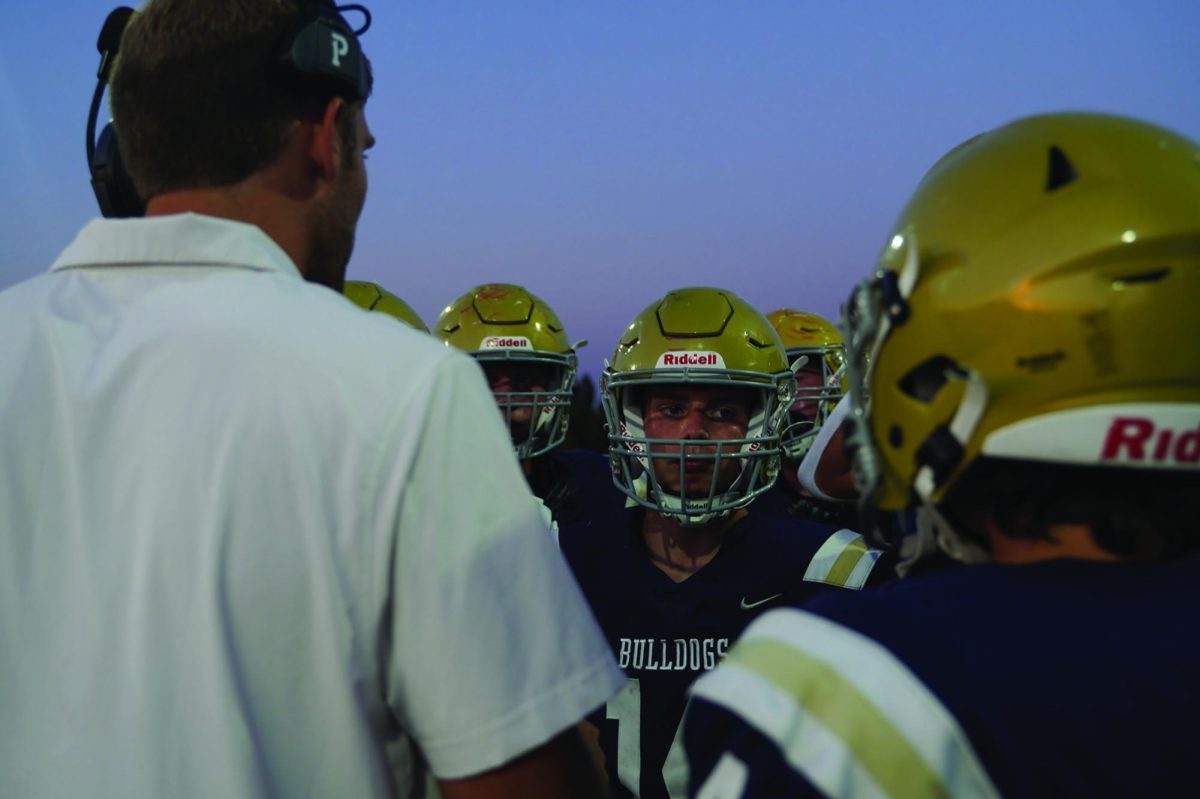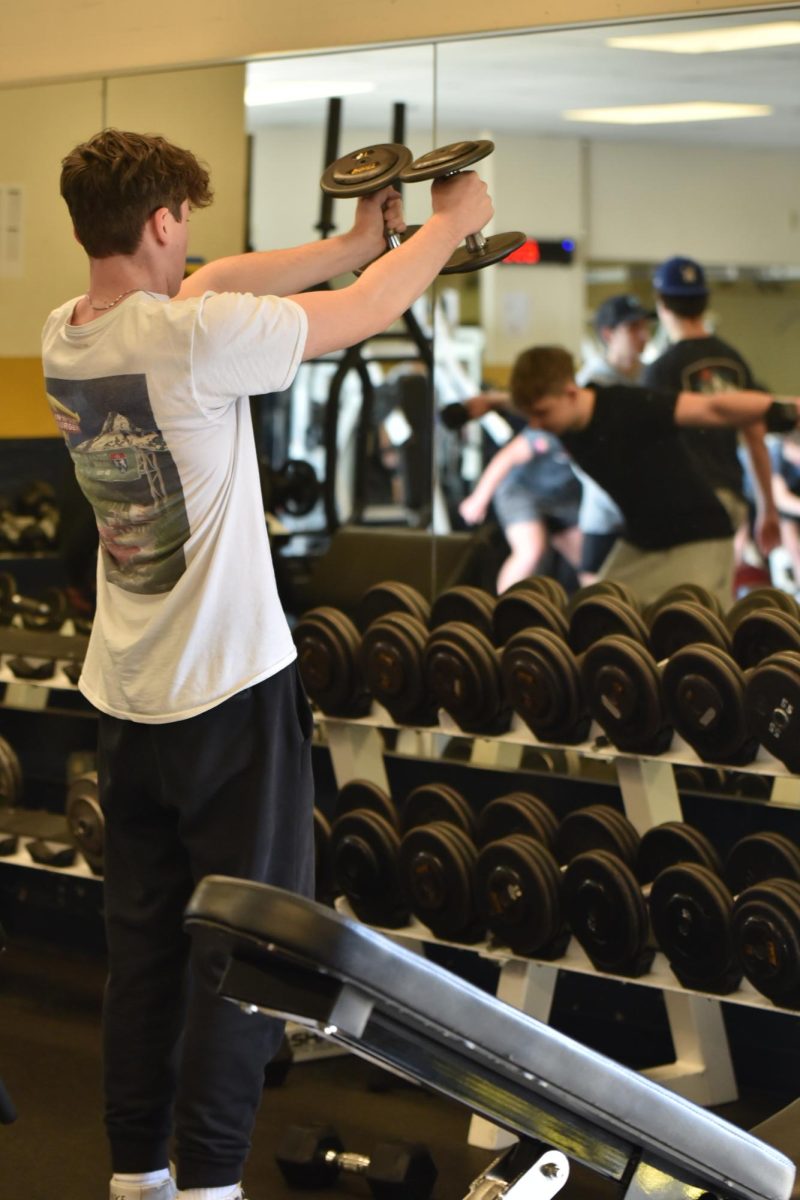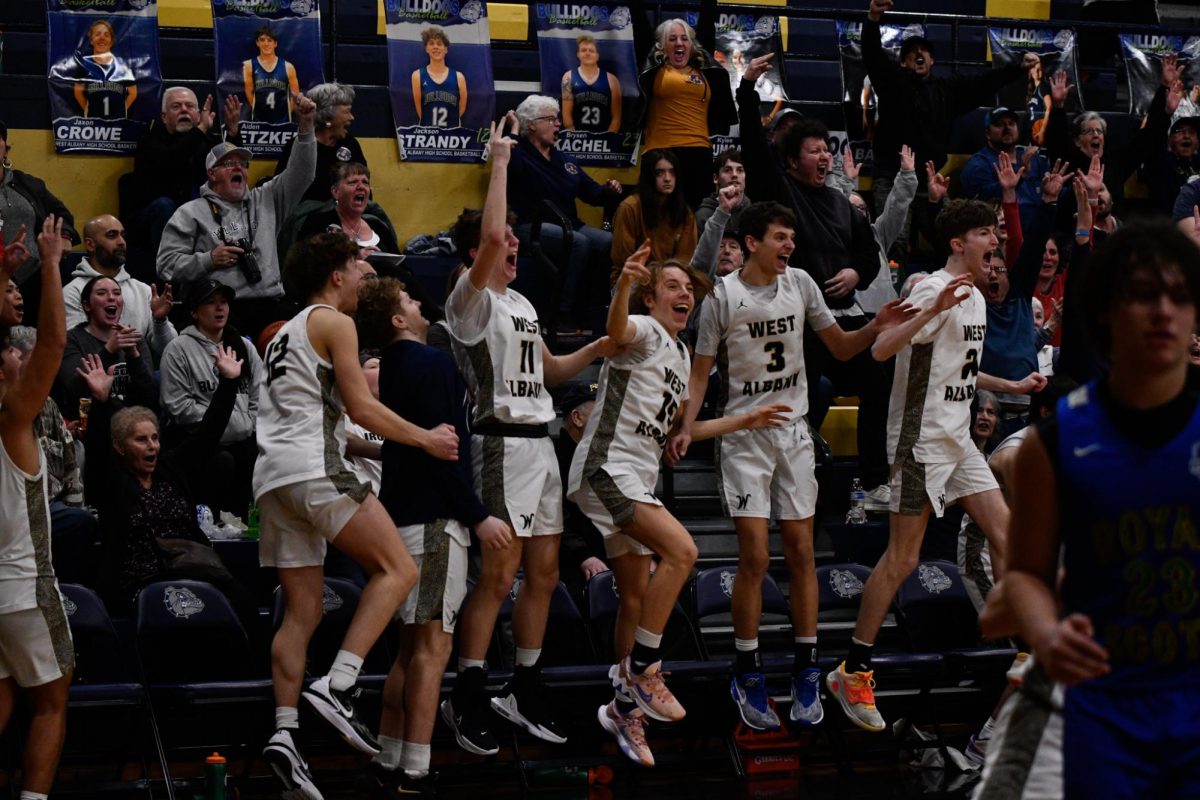Cole Pouliot and Sam Hartman’s roles as math teachers have them writing differential equations and optimization problems on the whiteboard during the day–but under the Friday night lights, these skills give the West Albany football team the upper hand. Both coaches at West Albany High School, and the math teachers have a unique perspective on the sport that comes from their underlying math skillset. Many may think the two subjects have nothing in common, but in reality, the game of football is built on a foundation of statistical probability and preparation.
“You can’t do it where you don’t do anything all week, and then you just show up at the game and try really hard,” Pouliot said. “That’s not a winning strategy.”
An aspect of football that is somewhat unique is the schedule. With only one game per week, it gives the team ample time for preparation to defeat their upcoming opponent. Pouliot’s role as a defensive coordinator means that he, along with the other defensive coaches, develops the defensive game plans for the team.
The coaches meet every Sunday to watch recordings of the team and their opponents, to put together a game plan that they will spend the upcoming week practicing. In practice, he stresses the importance of preparation in order to succeed on game day and uses statistics to create the most optimal practice schedule.
“We try to get our practice percentages to match the game percentages as closely as possible,” Pouliot said. “That way we are focusing on the right things for the right amount of time.”
These percentages are often derived from the application Hudl, which is a practice tool that allows the coaches to look at the statistics of West Albany’s games, as well as the games of their opposing schools. This application speeds up the process of analyzing the team’s performance and gives them a platform where they can break down their games by play to determine what strategies are consistently successful for them.
“If there’s one play that they run really well and they run it 30 times, you can watch all 30 reps in a row and not have to jump around,” Pouliot said, “which is really convenient.”
With this technology, they can see clearly their favorite formations and the play type they often rely on in those formations. This information helps Pouliot make and explain calls during games.
“We try to emphasize to the guys like, ‘Hey, in the last five games 90% of the time [you’re] in that formation, [you] run the ball,’” Pouliot said. “That helps give our players some insight into what’s going to happen, so hopefully they can react faster because they can anticipate what’s coming next.”
Although math isn’t everything when it comes to a successful game plan, understanding these concepts and tendencies allows the team to adapt faster because of the level of predictability of the game and the team as a whole.
“It helps inform our decisions and our team, but it’s not the most important thing,” offensive coordinator Hartman said. “It’s just one thing that gives us an edge.”
Math can be a helpful tool; however, the team can’t always use it as an absolute structure or crutch for their game plans. Part of the mental capacity that is a key part of football is in the unpredictability in the game, and being prepared to handle that is also crucial.
“There’s a million variables [in football], so there’s a million different ways that teams could defend us,” Hartman said.
This makes it difficult to rely entirely on statistics when creating a game plan. Leaving room for the players and coaches to make calls and decisions during live gameplay is also important for them to play a successful game. Working in absolutes limits the opportunities for players to make intuitive decisions.
“Sometimes you can almost overanalyze the numbers. I think it’s better to get a general feel for what they like to do. It’s hard to have steadfast, 100% rules,” Pouliot said. “That would limit you because you’re not very adaptable. So I think it’s a little bit of a balancing act.”
However, a comprehensive understanding of the tendencies of the team and the game as a whole does make the steps and plays that lead to a victory much easier to recreate and achieve consistently. Both Hartman and Pouliot encourage their players to gain an understanding of the mathematical characteristics of the game.
“I think excelling in the classroom helps you excel at the game because football is a lot more mental than a lot of people give it credit for,” Pouliot said.
Many players on West’s team are currently taking calculus, precalculus, or are on an advanced math track, which creates a team dynamic that may not meet the formulaic idea of a football team that is widely expected.
“There’s that stereotype of the dumb football player,” Pouliot said. “Our coaches and our players break that stereotype.”
Even outside of the game, gaining a more nuanced perspective is crucial to consistent success in any subject. Understanding the math behind their plays helps both the players and the coaches succeed in football, but it also creates a mindset that these players can carry into other aspects of their lives.
“I think it goes beyond football. [It applies] to people having a strong mathematical understanding of something that they do,” Hartman said. “Whether it’s football, basketball, or Scrabble, if you have a strong mathematical understanding of the game, you’ve got an edge.”











